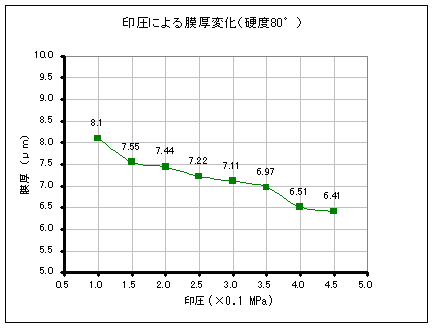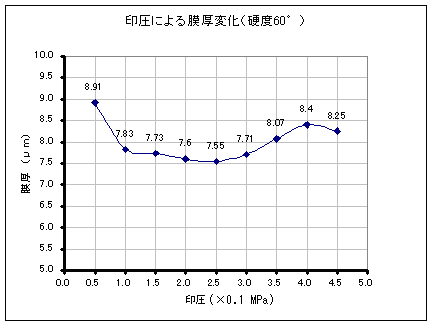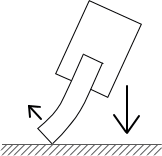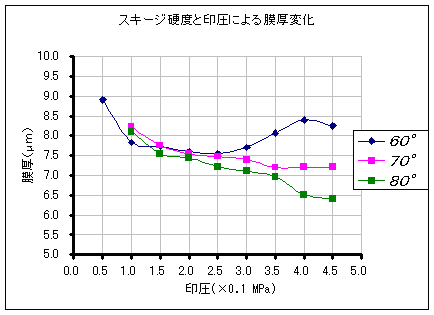In general, it is said that the film thickness (the thickness of the printed ink) becomes thinner as the printing pressure (the pressure applied to the squeegee) increases.
This is probably because the pressure of the squeegee scrapes the ink pushed out from the plate.
Our experiments have certainly yielded similar results.
Film thickness change due to printing pressure (hardness 80°)
This is probably because the pressure of the squeegee scrapes the ink pushed out from the plate.
Our experiments have certainly yielded similar results.
Film thickness change due to printing pressure (hardness 80°)
()()()()()()

However, this may not always be the case.
For example, when the hardness of the squeegee is changed from 80° to 60°, the result is as follows.
For example, when the hardness of the squeegee is changed from 80° to 60°, the result is as follows.
060606060606

Unlike the previous graph, the film thickness does not decrease linearly.On the contrary, it becomes thicker from around 0.25mpa.
This is because the squeegee loses the printing pressure and bends more, causing the printing pressure to escape, and the deflection of the squeegee lowers the angle of attack with the actual plate, pushing out more ink.
This is because the squeegee loses the printing pressure and bends more, causing the printing pressure to escape, and the deflection of the squeegee lowers the angle of attack with the actual plate, pushing out more ink.
.0.0.0.0.0.0

The higher the hardness of the squeegee, the harder it is to bend, and the lower the hardness, the easier it is to bend.
However, if the hardness is increased blindly, there are also adverse effects such as difficulty in extruding the ink, so caution is required.
However, if the hardness is increased blindly, there are also adverse effects such as difficulty in extruding the ink, so caution is required.
Also, the squeegee hardness varies depending on the manufacturer and material, and it is generally said that there is an error of about ±5°.
Even with the printing pressure, when various other actuators are operated, the supply pressure fluctuates to some extent.
How can we obtain a stable film thickness under such uncertain conditions?
Now let's overlay the graph above.

From this graph, it can be seen that a film thickness of 7.5 μm is considered to be the standard for performance (for the combination of ink and gauze used in this experiment), and the most stable performance is demonstrated at a printing pressure of 0.15 to 0.25 mpa.
■
These printing results are based on experimental results at our company, and results may vary depending on the ink, plate, squeegee speed, pressure, clearance, etc.
Also, if you measure the in-plane variation of the film thickness, you can get interesting data.
.0.0.0.0.0.0
